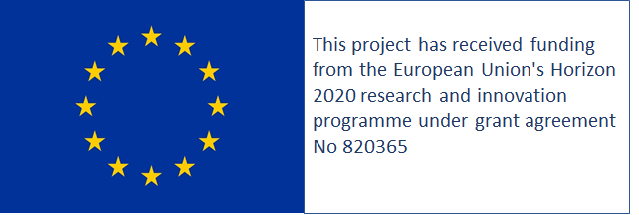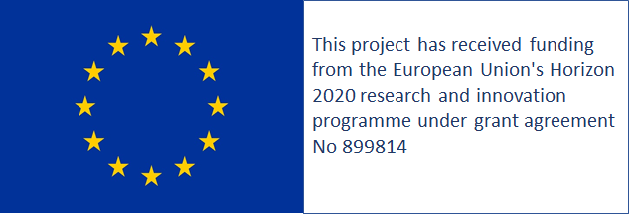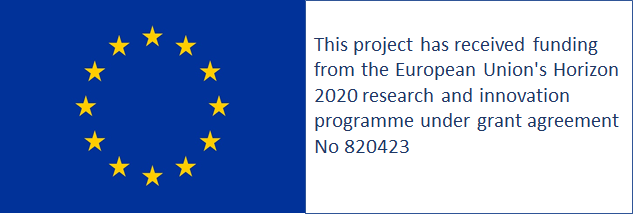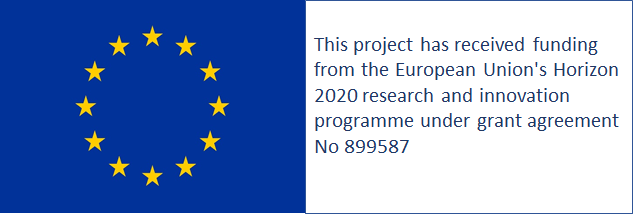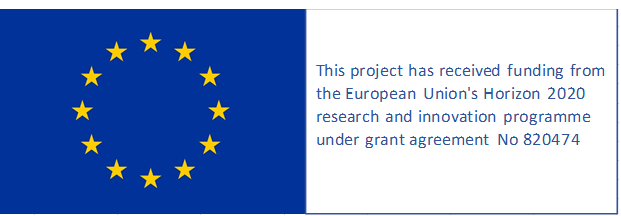Von der EU geförderte Projekte
Quantum technologies are expected to have a transformative impact by exploiting fundamental quantum mechanical effects for technological applications such as quantum computation, quantum simulation, quantum communication, and quantum sensing. Photons are the only reliable qubit for quantum information transmission, making them an essential resource for quantum technologies. However, quantum photonics will only meet its expectation as a ground breaking technology when integrated in a scalable fashion. The solution lies in quantum photonic integrated circuits where photons are used to encode and process quantum information on-chip, offering scalable quantum information processing units. Currently, different integration platforms are investigated with a selection of building blocks available. However, no platform has shown a comprehensive toolbox combining all functionalities on a single chip. In this project I will demonstrate that the thin film lithium niobate on insulator platform can simultaneously link all quantum photonics building blocks on a single platform, resulting in fully integrated quantum photonic integrated circuits. I will develop integrated Lithium Niobate Quantum systems (LiNQs) showcasing the generation, manipulation, and analysis of photonic qubits. This will result in the first compatible integration platform hosting semiconductor quantum emitters, quantum memories based on rare-earth ions, cryogenic electronics, and superconducting single-photon detectors together with the outstanding properties of CMOS-compatible lithium niobate on insulator: low-loss circuits and fast modulators. By developing all required building blocks and linking them to scalable systems, I will provide the quantum technology community a single integration platform for all quantum photonics applications. LiNQs will lay the foundation for Europe’s forefront position in a future photonics- driven quantum technology industry
To increase our ability to sense the changes in the environment around us, we must understand how to control the quantum properties of light and matter at the fundamental limits of their interaction. As such, quantum sensing is poised to bring paradigmshifting transformations to how precision measurements are performed. Given the central role that MIR spectroscopy plays on many of the pressing issues facing modern society, there is an urgent need for systematic investments into the innovation and development of MIR quantum technologies for sensing applications. MIRAQLS brings together an interdisciplinary team of Canadian and European researchers, together with industry partners, who share a long-term vision for the development of MIR quantum photonic technologies for sensing applications. Our team combines expertise in quantum photonics, materials science, optoelectronic component development, MIR laser science and spectroscopy, biophotonics, photonic inverse design, quantum optics theory, and quantum information science, and quantum technologies. MIRAQLS aims to tackle some of the biggest challenges that have hampered the development of MIR quantum technologies, while at the same time delivering concept demonstrators, such as quantum-enhanced Fourier-transform infrared spectrometer (q-FTIR), quantum-enhanced optical coherence tomography (q-OCT) and SU(1,1) interferometry. By manipulation of quantum statistics of the input states, e.g. squeezing and entanglement operations, we aim to achieve better sensitivity bounds in comparison to the classical technology, limited to the operation at the standard quantum limit (SQL). Improvements in MIR sensing will directly translate to increased societal well-being, safety, and prosperity; it becomes indispensable in the context of the global fight against the looming climate crisis.
Metasurfaces that mimic artificial order in the matter have recently opened an exciting gateway to reach unprecedented properties and functionality for the modification of light propagation. The artificial “atoms” and “molecules” of the metasurface can be tailored in shape and size, the lattice constant and inter-atomic interaction can be precisely tuned. Furthermore, using symmetry and polarization state properties topological Berry phase effects can greatly enhance the functionality of such surfaces.
With this project, we explore the revolutionary physics of nonlinear optical Berry phase metasurfaces, covering nonlinear optical frequency generation and wave dispersion engineering as well as real-time reconfiguration of nonlinear optical properties. Novel unique nonlinear optical properties of metasurfaces that arise from their specific topological configurations open up exciting new venues for device development in the fields of all-optical data processing, optical meta-nanocircuits, phase conjugating perfect mirrors, and background-free nonlinear holography. We investigate the possibilities of strongly enhanced nonlinear light-matter interaction and novel nonlinear optical processes that are based on nonlinear topological Berry phase effects coupled to inter- and intersubband transitions of novel 2D materials. Single layers of transition metal dichalcogenides will allow reconfigurable nonlinear optical properties by changing the valley band transitions.
The project covers the development of innovative fabrication technologies, fundamental investigations of the origin and the design of effective nonlinearities with controlled phase, experimental characterizations, as well as device development. The findings of the project based on highly nonlinear reconfigurable metasurfaces based on symmetry and topological effects will impact interdisciplinary research fields including condensed matter physics, optoelectronics, and biophotonics. Fast optical switches and frequency converter in miniaturized and integrated systems for quantum information technology might benefit from the small footprint and the design freedom of metasurfaces.
Project PhoG develops a family of unique devices for generation of quantum states of light, a tailored light with user-selected properties. PhoG devices are based on engineered nonlinear loss in dissipatively-coupled optical waveguide networks, with the "cheap" attenuated coherent states as input. The nonlinear loss acts over much faster timescales than conventional (linear) loss, and so the system is robust to realistic physical limitations. In different regimes, PhoG acts either as a deterministic source of highly sub-Poissonian light, or as a source of entangled photons in different state configurations. Such wide performance range is enabled by a unique physical mechanism behind PhoG and by unique capabilities of the ultrafast laser inscription techniques. The strength of this approach is the ability to inscribe arbitrary patterns of 3-dimensional waveguide structures to create a desired configuration. The devices are compact, on a glass chip. Modern technologies widely use such integrated platforms which renders PhoG highly compatible with current technological systems.
Such quantum sources PhoGs (Photon Guns) will enhance the performance of many protocols across the Quantum Technologies arena by providing a ready alternative to attenuated quantum coherent states which are normally used because of their convenience. Within the project, we implement these devices to enhance super-resolution imaging and to improve stability of the commercial atomic clock. We will create proof-of-principle demonstrations of these applications. For the characterisation purposes, we have developed a unique detector, that can resolve large photon numbers and is based on the established concept of time-multiplexing, which was pioneered by members of the consortium.
The test board and the algorithms have been developed for the application of PhoG in super-resolution microscopy. Laser light passing through a quantum network of PhoG is transformed into special, entangled states of light. This allows to highly enhance the image quality using spatiotemporal quantum correlations. Apart from the purely quantum realm, our coherent devices can have classical applications, be used in quantum-inspired technologies, perform better than standard classical devices. They will enrich integrated quantum photonics with devices in unusual operational regimes and can be generalised to other photonic integrated circuits (PIC) platforms.
The Quantum Secure Networks Partnership (QSNP) aims at creating a sustainable European ecosystem in quantum cryptography and communication. A majority of its partners are participants in the Quantum Flagship projects CIVIQ, UNIQORN and QRANGE, and include world-leading academic groups, research and technology organizations (RTOs), quantum component and system spin-offs, cybersecurity providers, integrators, and telecommunication operators. The Partnership thus has the expertise in all technology development phases, from new designs to field deployment, making it ideal to carry out the future Specific Grant Agreement (SGA) projects. QSNP is structured around three main Science and Technology (ST) pillars. The first two pillars, “Next Generation Protocols” and “Integration”, focus on frontier research and innovation led mostly by academic partners and RTOs. The third ST pillar “Use cases and Applications” aims at expanding the industrial and economic impact of QSN technologies and is mostly driven by companies. In order to achieve the specific objectives within each pillar and ensure that know-how transfer and synergy between them are coherent and effective, QSNP has established ST activities corresponding to the three main layers of the technology value chain, “Components and Systems”, “Networks” and “Cryptography and Security”. Future SGA projects will be able to efficiently rely on this framework, in such a way that the ultimate objective of developing quantum communication technology for critical European infrastructures, such as EuroQCI, and private information and communication market sectors, will be achieved. QSNP will contribute to achieving European sovereignty in quantum technology for cybersecurity. At the same time, it will generate significant economic benefits to the whole society, including training a new generation of scientists and engineers, and the creation of high-tech jobs in the rapidly growing quantum industry.
Optical measurements are fundamental to experimental science and observations of nature. At the single photon level, superconducting nanowire single-photon detectors (SNSPDs) are well-established as the gold standard in measurement, due to their near-unit efficiency, negligible noise and ultrafast response. Building SNSPD arrays and simultaneously extracting intensity, spectral and spatial resolution from a device at the single photon level will revolutionise astronomical measurements, spectrometry in chemistry and life sciences, and quantum imaging. Key to unlocking this potential is to marry concepts from detector tomography with robust high-yield detector fabrication, the integration of complementary optical technologies and low heat-load scalable readout schemes. QuESADILLA tackles these challenges head-on, with a series of experiments demonstrating the groundbreaking potential of quantum detector engineering. In contrast to engineering quantum states of light for metrology, QuESADILLA will shift that paradigm by engineering the quantum mechanical response of the detector itself. QuESADILLA introduces the concepts of a modal decomposition of the positive operator valued measure (POVM), and quantum-enhanced POVM engineering in low-light applications. To do so, arrays of SNSPDs in combination with lithographically-written etalons and dielectric coatings will be developed, in concert with state-of-the-art scalable approaches to large scale quantum tomography. QuESADILLA will exceed the state of the art in many areas: performing the first modal decomposition of detector tomography and the largest tomographic reconstruction of a quantum detector; the first demonstration of quantum detector engineering using nonclassical ancilla states; the first demonstration of etalon array reconstructive spectrometry with single photons; and exploit the fastest electronic shutter speed of any optical sensor to enable the highest dynamic range detection of continuous illumination
Understanding the complex interactions and dynamics of multiple quantum particles within large networks is a challenging task, but doing so reveals the underlying structure of a diverse range of phenomena. Therefore, a reliable platform to investigate complex quantum network dynamics, which incorporates the rich interplay between noise, coherence and nonclassical correlations, will be an extremely powerful tool.
Classical optical networks have been widely used to simulate a broad range of propagation phenomena across many disparate areas of physics, chemistry and biology. At the quantum level, the quantized nature of light – the existence of photons – gives rise to interference effects that are completely counter-intuitive. Yet, to date, quantum network experiments remain very limited in terms of the number of photons, reconfigurability and, most importantly, network size.
Here, we propose time-multiplexed optical networks, in combination with tailored multi-photon states as a new platform for large-scale quantum networks. Our approach allows us to emulate multi-particle dynamics on complex structures, specifically the role of bosonic interference, correlations and entanglement.
To achieve large networks sizes, we will develop novel decoherence mitigation strategies: programmable noise, topologically protected quantum states and perpetual entanglement distillation. This approach will blend ideas from solid state physics, random media and quantum information and communication in order to pursue the following three objectives:
1. Demonstrate noise-assisted entanglement distribution
2. Demonstrate nonclassical states on topological structures
3. Demonstrate perpetual distillation of entanglement within a network
These objectives target the overall goal to understand the role of multi-particle quantum physics in complex, large-scale structures harnessing time-multiplexed photonic networks.
Today’s society is based on the fast access to information. Getting a head start on information is key in business, finance, politics and security. Most of our information exchange is done via the internet. However, not only has the current structure of our internet limits in capacity but also data transfer is not secure. Therefore, we are in need to invest in a future network, capable of handling the massive data flow and allowing for secure data communication. Physics offers a solution to this difficult task in the so-called quantum internet. By using quantum mechanics, it is possible to encode information on the smallest quantum of energy, a single light particle called photon. Information encoded on single photons cannot be eavesdropped without the sender and original receiver noticing it. The basic concept relies on network nodes and special links, which are the quantum mechanical analogue to classical fiber amplifiers currently used to overcome transmission losses in standard network, to connect physically separated nodes with each other. However, the same quantum mechanical principle (non-cloning theorem) which makes the network totally secure also renders classical signal amplification impossible. Qurope develops quantum communication links taking advantage of another quantum mechanical effect to overcome transmission losses: Entanglement swapping using quantum repeaters. This allows transferring quantum information without physically sending a single information carrier the full distance to the receiver. Realizing such quantum repeaters requires quantum memories and entangled photon pair sources. The goal of Qurope is to develop a hybrid quantum repeater architecture based on dissimilar quantum systems and to test its performances in real-word applications. The envisioned implementation is based on two disruptive technologies that will be pioneered during the project: (i) Near-ideal quantum-dot-based sources of entangled photon pairs that will simultaneously feature high brightness, near-unity degree of entanglement and indistinguishability, wavelength-tuneability, and on-demand operation. (ii) Efficient and broad-band quantum memories that will be specifically designed and engineered to store and retrieve polarization-entangled photons from quantum dots. Different quantum dot-quantum memory systems will be combined to develop near-infrared and telecom-based quantum repeaters, which will then be tested using both free-space and fiber-based quantum key distribution protocols based on entanglement. This will be performed in the elementary quantum-network infrastructure available in the consortium – a major breakthrough that will open the path towards future large-scale implementation of secure quantum communication. The project combines semiconductor physics, nanofabrication technology, atomic physics, and quantum optics, and strongly benefits from the emerging synergy effects. This gives Qurope all required tools at hand to finally realize a functional hybrid quantum repeater between quantum network nodes, bringing us one big step closer to the quantum internet.
Bringing photonic quantum technology, such as quantum communication, photonic quantum sensing, as well as photonic quantum simulation and computing, to market requires a scalable platform to increase the complexity and thus functionality of the envisioned devices. Silicon-based photonic integrated circuits emerged as a promising platform to achieve the required scalability by offering miniaturized architecture, low loss connectivity, and well-developed nanofabrication technology. However, the main building block for photonic quantum technology, namely the quantum light source producing the photonic quantum states, is challenging to monolithically integrate on such circuits. This stems from the indirect bandgap of the underlying semiconductor. Major efforts have made to build hybrid quantum photonic systems integrating optically active elements after nanofabrication of the circuit. Up to date these techniques suffer from resource heavy non-scalable transfer methods which hinders marketability of such circuits. In S2QUIP we take advantage of a new type of material, two-dimensional (2D) semiconductors. Two-dimensional semiconductors are a new class of materials, capable to emit quantum light. Furthermore, different 2D materials can be stacked, creating artificial heterostructures with tailored physical properties. Thus, 2D materials are a key enabling technology offering deterministic position control and straight forward integration into complex photonic circuits – clear advantages compared to other solid-state quantum emitters.
S2QUIP aims to develop a new platform to realize building blocks for future applications of quantum technologies using 2D materials. We develop multiplexed on-chip quantum light sources based on two different approaches using the unique properties of different 2D materials. We are focusing on three key factors for photonic quantum technologies: small, cheap, and robust, which are the current bottlenecks to bring the quantum world into our every day’s world. Our contribution will help to build sources for secure communication and for sensors with unprecedented resolution, assisting microscopy and imaging techniques.
Metrology explores the most efficient and precise way to perform measurements. This established area of study has considerable impact on our everyday lives. A GPS would not work without the capability to measure distances precisely, and spectral fingerprinting is an established technique to identify, e.g., drugs and hazardous materials. In recent years, researchers have begun to study metrology in the counterintuitive realm of quantum mechanics, so called quantum metrology. Surprisingly – or maybe not so, depending on whom you ask – it turns out that quantum properties such as entanglement can be highly beneficial for metrological tasks. Experiments have shown measurement precision beyond any classical measurement and to date, ever more demonstrations are reaching the ultimate precision limits set by quantum mechanics. These findings have two potential impacts: on the one hand, we can imagine measurements that simply cannot be implemented with classical means and that consequently enable hitherto unknown applications; on the other hand, we find that a better measurement can reach the same precision as a worse measurement in less time, leading to faster data acquisition. Interestingly, quantum metrology mainly focusses on measuring phases, with only few works considering spatial imaging. There is no comprehensive approach to measuring time or frequency using quantum mechanical methods, although many applications could benefit from such techniques.
This is where the work of STORMYTUNE comes in. We will develop a theoretical and experimental toolbox for time-frequency quantum metrology and explore possible avenues for improving applications using our methods. In contrast to other approaches to quantum metrology that mainly focus on using fragile probe states, we will investigate the achievable benefits when using quantum measurements and simple, robust probe states. Further, we aim to improve the performance of our techniques by adding the ideas of superresolution measurements and compressed sensing to time-frequency quantum metrology, thus reducing measurement times even more.
The STORMYTUNE consortium comprises world-leading scientists and industry partners, who are ideally positioned to achieve the project goals. For this research, we have identified three strategic objectives that will guide our efforts.
- Objective 1: Develop a time-frequency quantum metrology toolbox that comprises of the tools and methods for investigating the limits of temporal and spectral measurements using quantum mechanics.
- Objective 2: Investigate the limits of time-frequency quantum metrology with regards to the ultimate measurement precision, the resource consumption, and the ease of implementation.
- Objective 3: Implement proof-of-concept demonstrations that show a clear benefit of quantum metrology when compared to standard measurements and that exploit techniques from superresolution measurements and compressed sensing.
The second quantum revolution promises unprecedented advantages in the fields of computing, communication and sensing. The ability to produce, manipulate and detect single quantum states allows for a new kind of information processing based on the laws of quantum mechanics. For computing this means the emergence of quantum computers that can outperform any classical computational task due to exponential speed-up in its processing power. With quantum sensing we have the possibility to build exceedingly precise sensors that work over a wide dynamic range. Communication will especially benefit from quantum enhanced protocols, since the currently employed public key infrastructure is vulnerable to attacks from quantum computers. Our modern way of life is critically dependent on efficient and secure transmission of data. The data traffic increased exponentially in the last decade not only thanks to more people using the internet but also due to the growing business-to-business (B2B) market in database storage and cloud services. So, any vulnerabilities in the security would lead to a loss of confidence in using those services with not only a large impact on businesses but also on our personal lifestyles. Quantum communication is coming to the rescue, because it can provide information-theoretic security against any attacker, even a quantum computer, in the form of quantum key distribution (QKD). However, the technological building blocks are just beginning to emerge from laboratories and further progress is still necessary to make the technology user-friendly and affordable and to incorporate it into our existing communication network infrastructure.
The UNIQORN project aims to support the development of quantum communication along the whole value chain from fabrication to application. UNIQORN’s mission is to provide the technology to integrate complex systems, which are presently found on metre-size breadboards, into millimetre-size photonic integrated chips (PICs). These systems will not only reduce size and cost but will also bring improvements in terms of robustness and reproducibility. The project also aims to deploy the quantum communication modules in fiber networks and demonstrate real-world applications. The deployment trials will include tests such as coexistence, where classical data is sent over the same fiber as the quantum signal.




